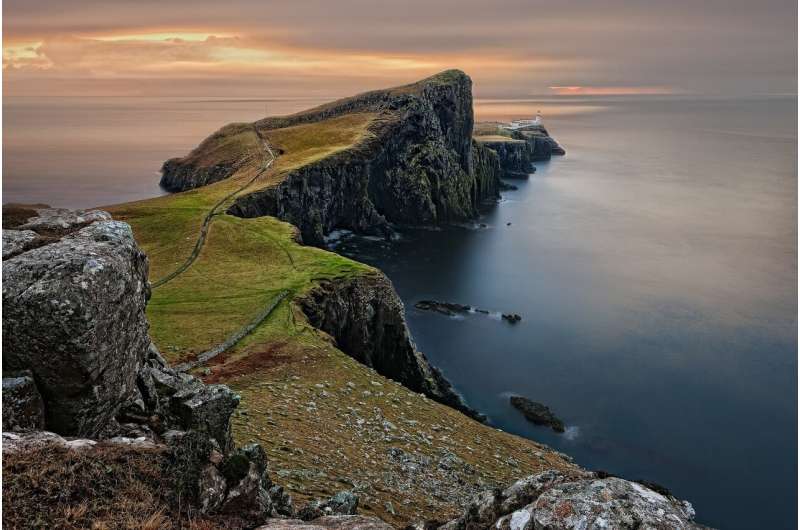People already live alongside predators in India and Kenya. Here's how it could work in Scotland

On my way to the Scottish Highlands for the first time, I was mesmerized by the beauty of the landscapes and struck by its resemblance to the North American wilderness, albeit without the wildlife.
I felt sad to think that the only howl I was going to hear was that of the wind—like a lament for Scotland's lost predators: the wolf, the lynx and the bear. Little did I know at the time that one of the places I passed through was called Rannoch Moor which, , is an ideal place to reintroduce wolves to Scotland.
Scotland is one of the most wildlife-depleted countries . Yet, no reintroduction is on the cards.
According to , big predators are necessary to maintain healthy ecosystems. For instance, wolves and their co-predators could help solve Scotland's biodiversity crisis and bring balance back to Scottish ecosystems by regulating populations of deer, foxes and badgers. In doing so, big predators may also contribute to the fight against climate change by enhancing . Overpopulation of herbivores can deplete plant species and trees which capture carbon dioxide emissions responsible for global warming.
But prejudice still runs deep, especially among farmers, regardless of any tangible benefits that predators could bestow even on farmers themselves. The recent downgrading of the legal protection afforded to the wolf in continental Europe is .
For most farmers, livestock being killed by predators is their biggest worry and one that means they oppose such a move. But success stories from India and Kenya suggest that coexistence between predators and farmers is feasible.
Shortly after my visit to the Highlands, I traveled to Jawai in Rajasthan, India, and Laikipia in Kenya. In both of these places, farming communities live in relative harmony with a host of predators.
In Rajasthan, farmers share an arid landscape with tigers, leopards, striped hyenas, jackals, sloth bears and the occasional Indian wolf. This is even more impressive because has an average population density which is several times higher than that of .
In Jawai, in the absence of wild animals which are their usual prey, such as deer. Shepherds never retaliate, and culling of some cattle is generally accepted. Thanks to their tolerance, the increasing leopard population has enabled the emergence of a thriving ecotourism industry.
In Gujarat, the peaceful coexistence between the Maldhari farmers and the last population of Asiatic lions has been described by experts as . While the lions feed on the cattle, they mostly target unproductive cattle—there's a cost for farmers to maintain unproductive cattle, so there's no huge financial loss when those are the ones that get killed by lions.
In areas where lions live, the Maldhari farmers also gain additional profits through free grazing rights and access to forests for wood supplies and other plant resources. Compensation schemes for losses of heads of cattle, and create further acceptance of big predators. Ensuring that a wide range of prey species are available to predators, such as happens in Laikipia, also significantly reduces risks of attacks on cattle.
Big predators are also a draw for tourists. In Kenya, ecotourism alone constitutes approximately . The reintroduction of large predators in Scotland could further enhance its potential as an ecotourism destination, offset potential costs due to loss of heads of cattle and even benefit Scottish farmers and rural landowners both from an environmental and economic perspective.
Prejudice against predators
Reintroducing predators in Scotland would be a radical step. But, following centuries of prejudice, a change of mindset towards predators is needed.
In India, respect of all forms of life is enshrined in both and the law. It is a for both the state and every Indian citizen to protect wildlife and "have compassion for living creatures."
In 2019, the high court of Uttarakhand declared with corresponding rights, duties and liabilities. The Supreme Court of India held that environmental justice can only be achieved if human interests do not take automatic precedence and if humans have obligations to non-humans .
The recent (a disagreement over the import of elephant trophies from Botswana deemed unsustainable by Germany) shows that the west remains prone to patronizing other countries of big mammals. The UK and other European countries could learn from the of cultures further afield.
Scotland is the country in the UK. With vast areas of wilderness, it has enough space to accommodate both big predators and farmers for the benefit of all and become the Yellowstone of Europe.
Provided by The Conversation
This article is republished from under a Creative Commons license. Read the .![]()




















